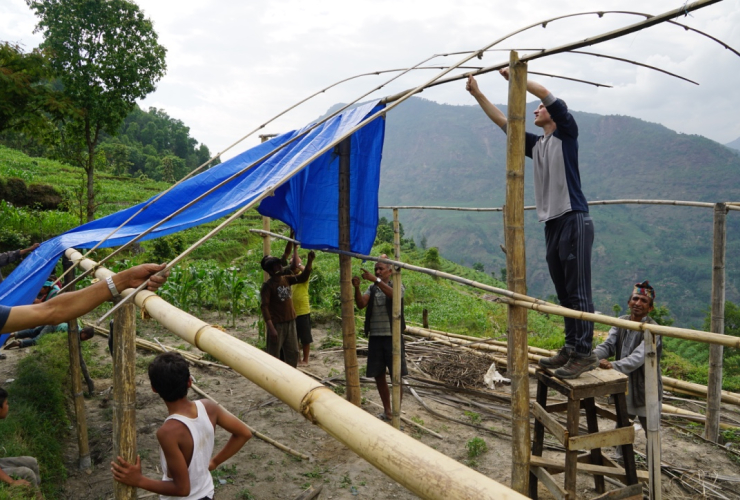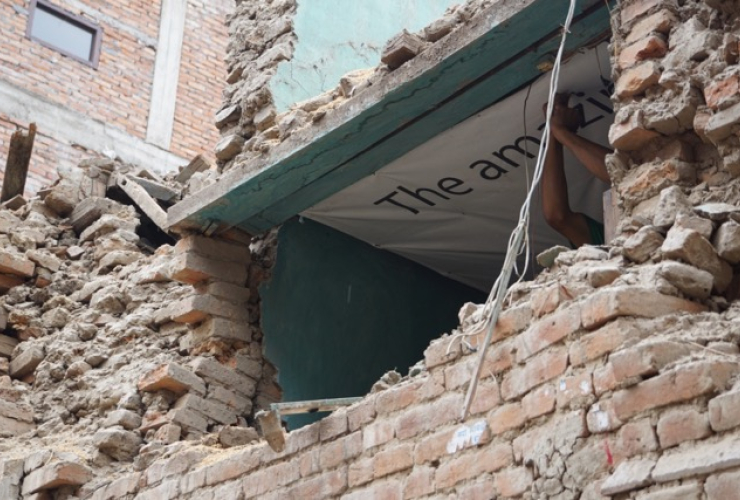An 8.3 magnitude earthquake that originated off the coast of Chile today caused buildings to sway in the capital Santiago and triggered tsunami alerts across the Pacific Rim.
Chile's president Michelle Bachelet spoke of heavy flooding in the towns of Coquimbo and Tongoy, both of which have been declared "catastrophe zones," where the military is being deployed to maintain order. Ten people are presently confirmed dead.
Bachelet said that casualties appeared low, destruction limited to walls and roofs, "...and not entire towns [were] getting flattened," according to updates in the UK Guardian.
The Chilean government's emergency office warned that a tsunami would likely hit the coast at 11 pm local time and the country is currently on red alert, but the latest reports show cities on Chile's coast already beginning to flood, including the seaside town of Coquimbo that was struck by a 15.1 foot wave.
Coquimbo's mayor Cristian Galleguillos told CNN Chile that 95 per cent of residents had lost power but managed to evacuate before tsunami waves hit the coast.
Pictures posted on Twitter show people fleeing en masse for higher ground before any tsunamis sweep in, while a short video was posted of warning sirens wailing in the coastal city of Valparaiso.
'Medium' aftershocks have also been reported in the cities of Coquimbo, Valparaiso and O’Higgins, according to Chile's national emergency office.
However, many lives were likely saved by stricter building codes and a new tsunami warning system that were installed after a major quake in 2010, which left more than 500 people dead.
Tsunami alerts and advisories have been issued for neighbouring Peru, California, Hawaii, and the eastern coast of New Zealand, while people in Chile itself are being evacuated.
The California warning states that "A tsunami capable of producing strong currents or waves dangerous to persons in or very near the water is expected."
Waves and currents could endanger boats, swimmers, and coastal structures for many hours after the initial waves strike.
"The first wave may not be the largest," stated the warning.
Further north in British Columbia, Emergency Info BC is monitoring the situation, but has not yet determined the tsunami threat as posing any danger to Canada's West Coast.
"The National Tsunami Warning Center is continuing to monitor the potential tsunami risk for CA, OR, WA, BC and AK. At this time, no zones of coastal British Columbia are assessed as being at risk," said a statement on Emergency Info BC's website.
Nonetheless, countries around the Pacific Rim remain alert to any potential danger.
"The Pacific Tsunami Warning Center in Hawaii said waves of up to a metre could hit New Zealand, while waves of between one and three metres could hit French Polynesia. New Caledonia, Fiji, the Samoas, the Cook Islands, Tonga and other island nations are also being warned of 1m waves. Smaller waves may hit Tuvalu, Papua New Guinea and Nauru," stated a report on Radio New Zealand.
At time of writing New Zealand's Ministry of Civil Defence is reportedly in 'precaution mode' and has not yet asked the public to keep off beaches or away from the sea.
People in more tsunami-prone areas should keep out of the sea, rivers, estuaries, and away from beaches. Residents in such areas should also listen to TV and radio updates and follow instructions given by authorities to stay safe.
One of the earliest casualties was 25-year old woman reported dead in the coastal town of Illapel, likely after being hit by a collapsing wall. Two more people were reported dead and another two missing in Tongoy.






Comments